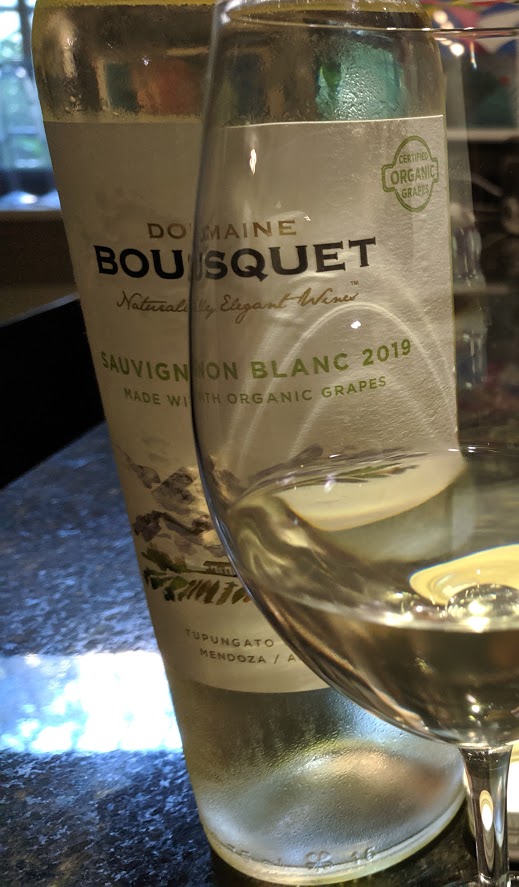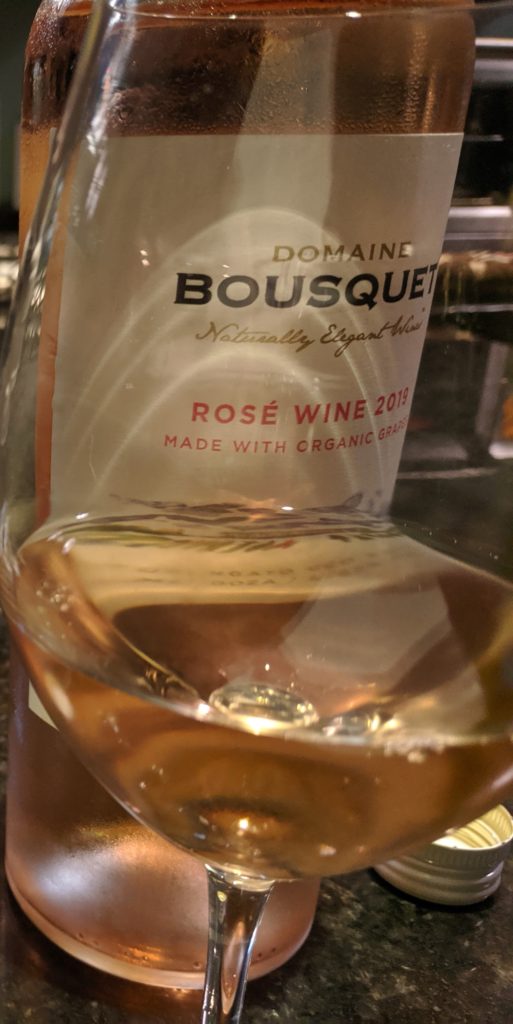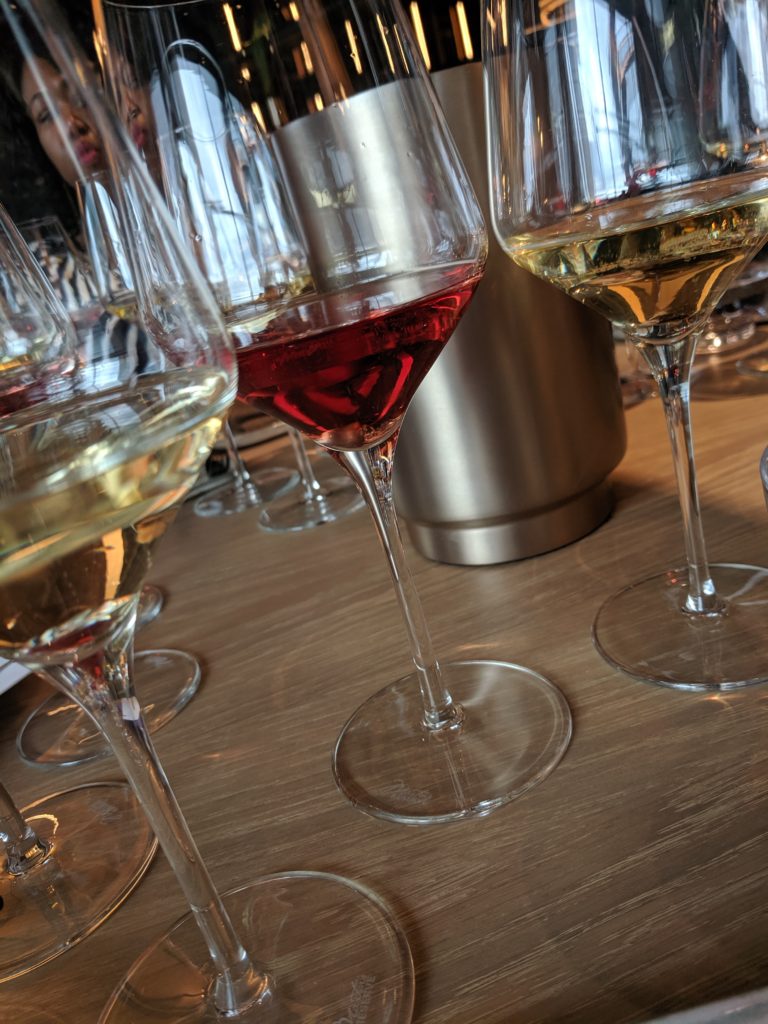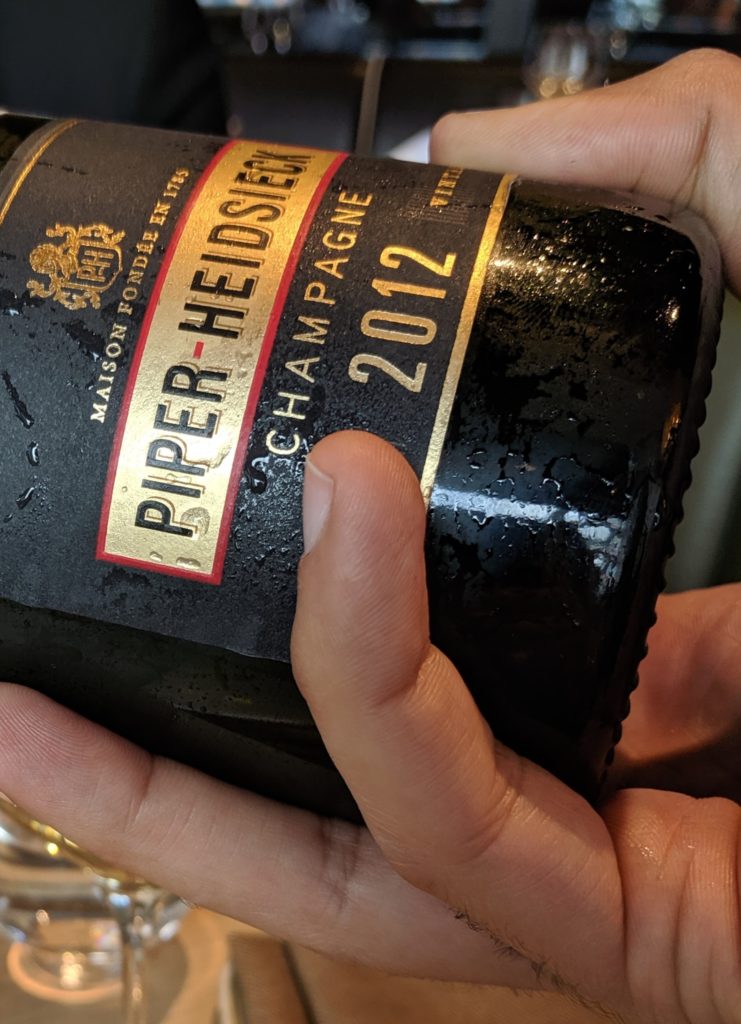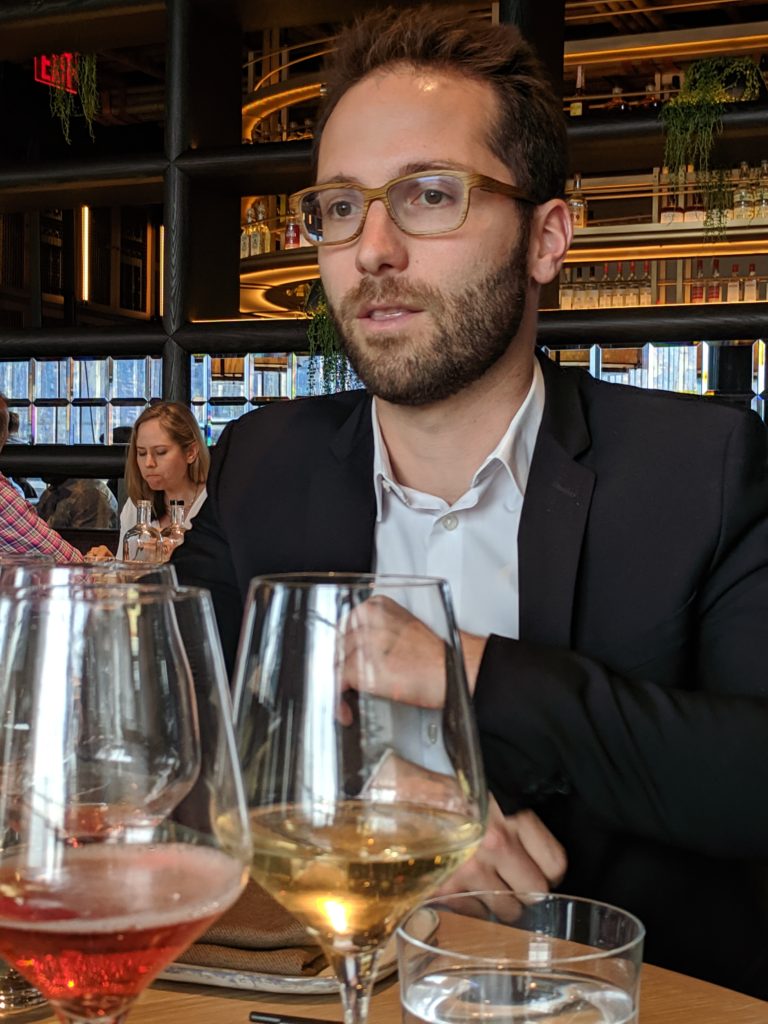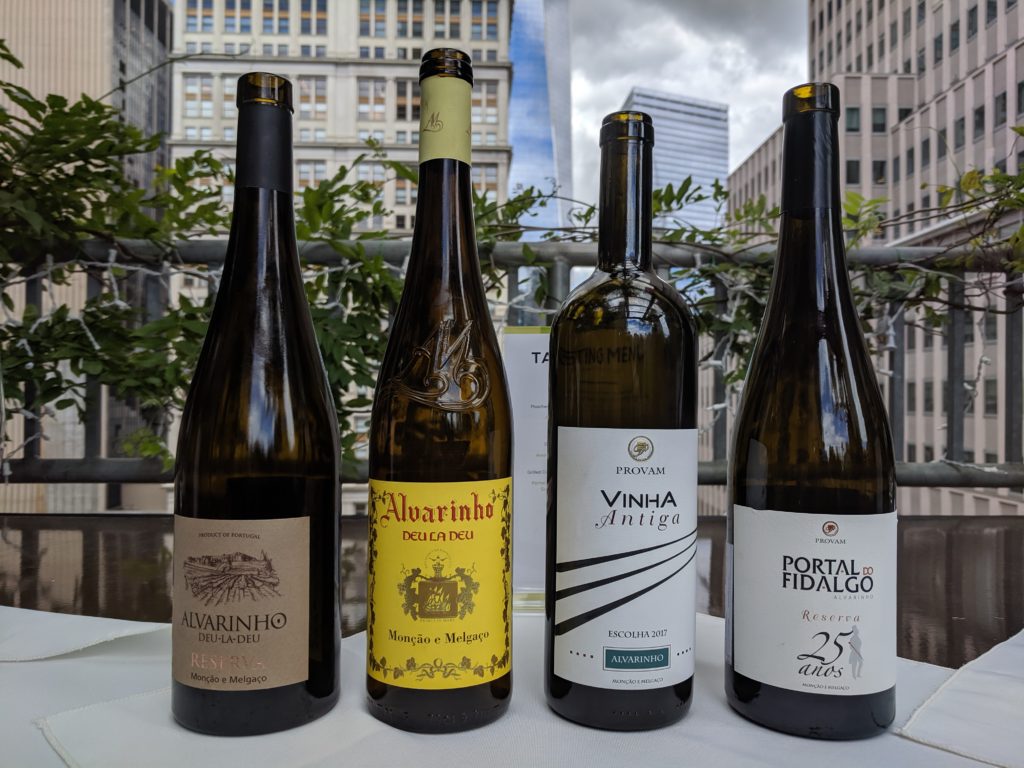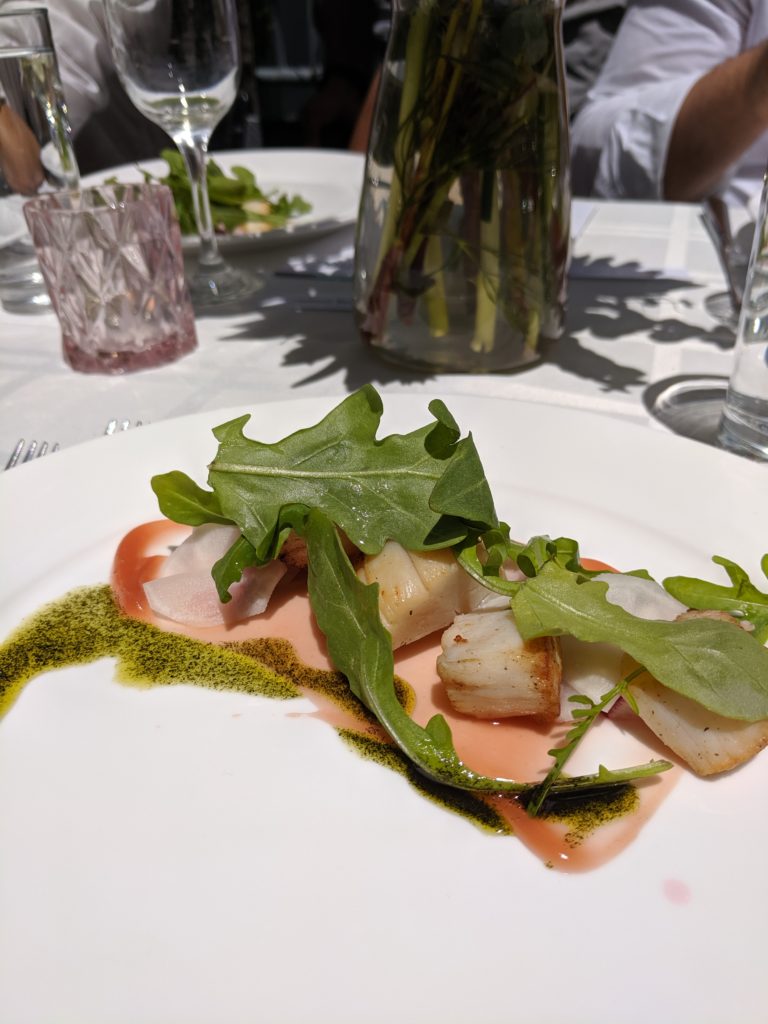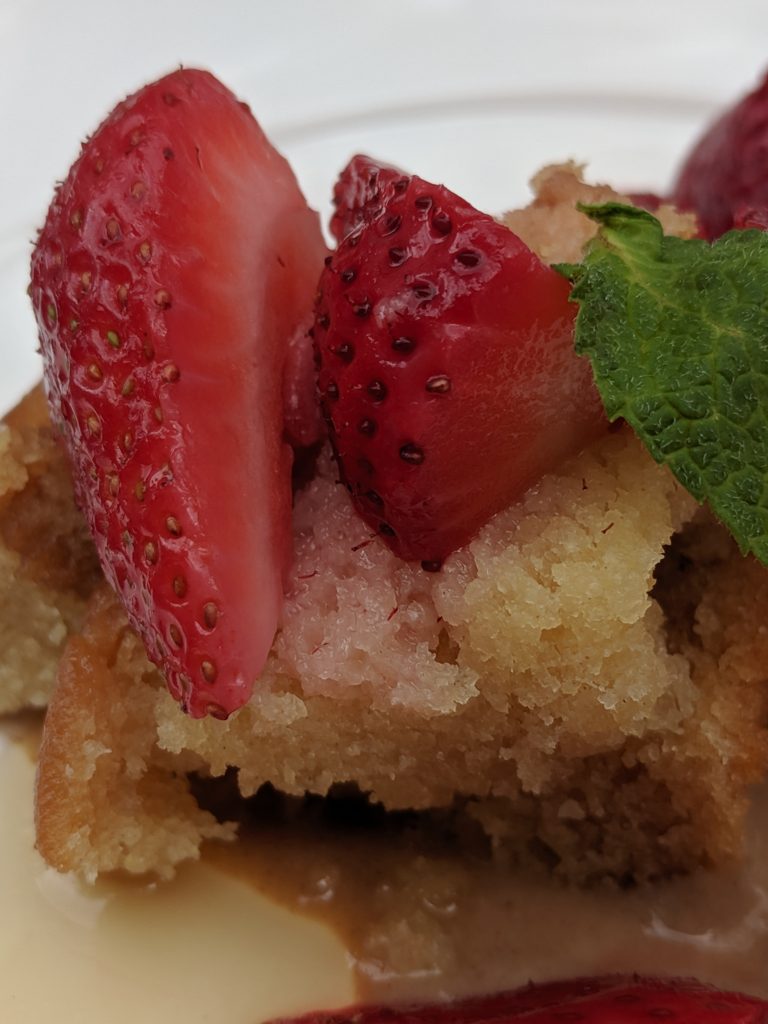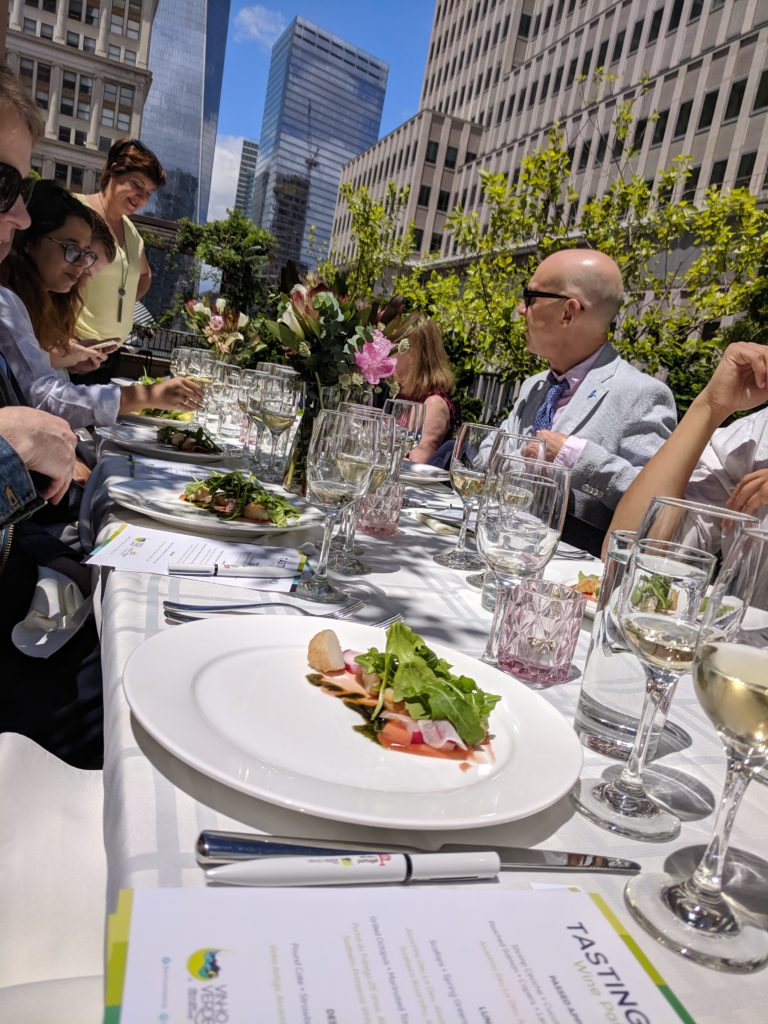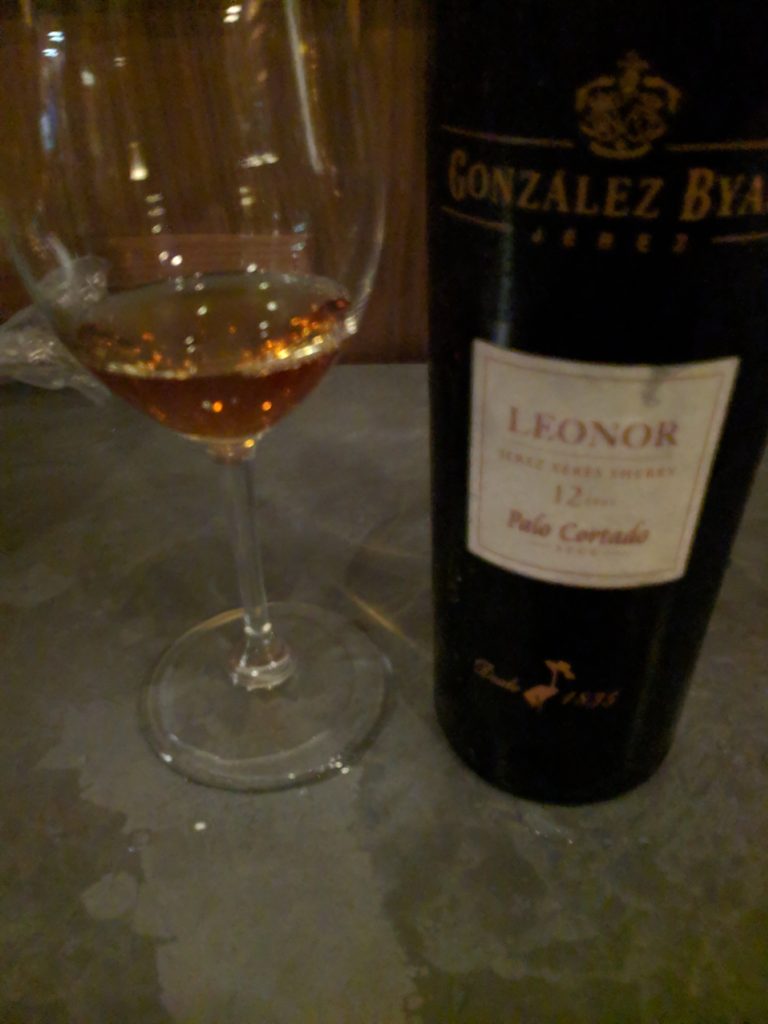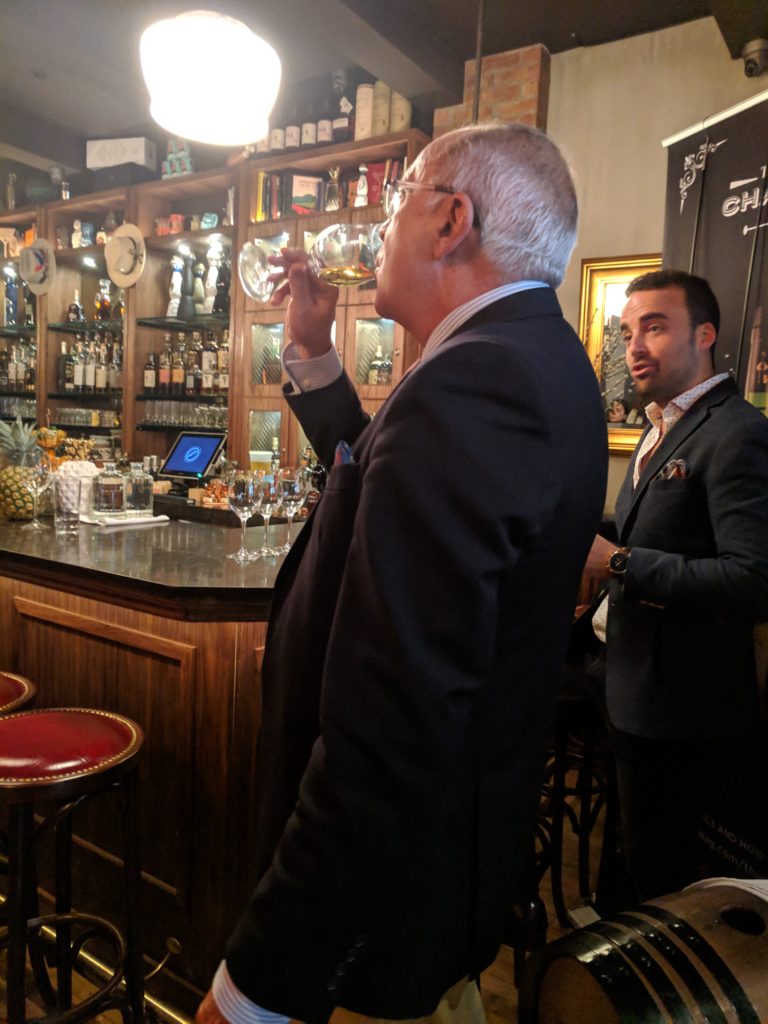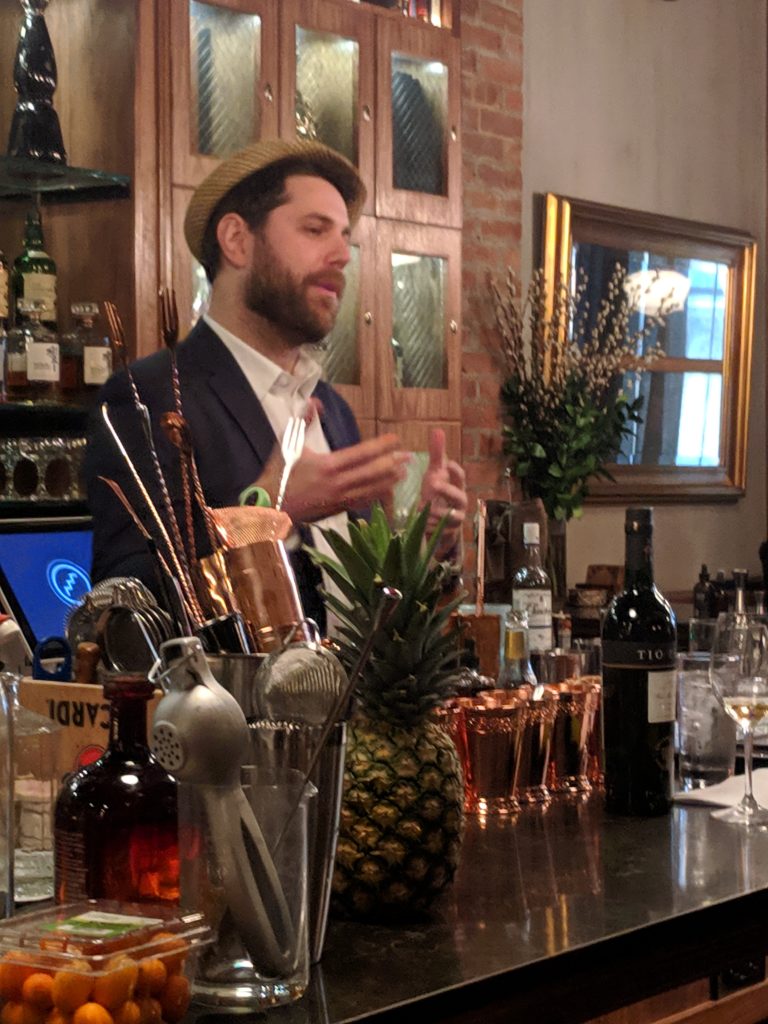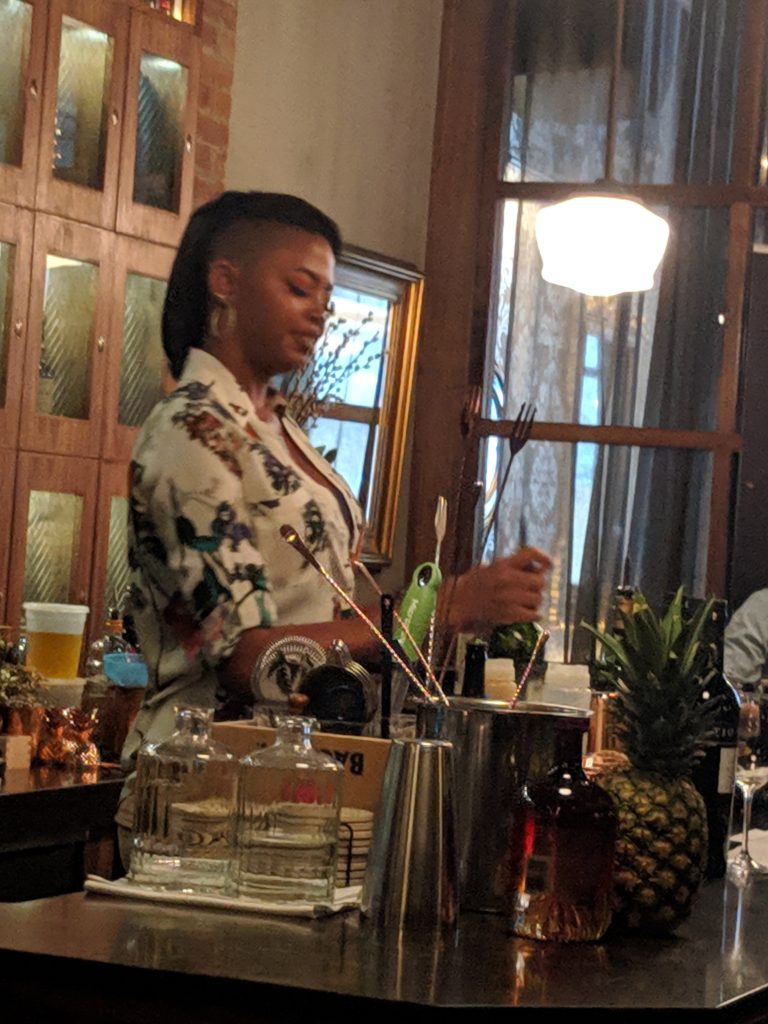Looking for a perfect pair of wines to take along to your next picnic? Look no further than Domaine Bouquet’s Sauvignon Blanc and Rose wines from the latest vintage. This Argentine duo are made from organically grown grapes, in vineyards situated within the high altitudes of Mendoza’s Uco Valley. Produced by the Bousquet-Al Ameri family, the winery has made wines for the past 15 years.
First established by Jean Bousquet, Anne Bousquet took over in 2011, joined by her husband Labid Al Ameri. The husband and wife team brought in consulting winemaker Paul Hobbs to improve their viticultural practices in 2015 and are presently working on their newest planting project, which features Grenache and Cabernet Franc.
However, their overarching goal is simply stated by Anne, “We just want to make the finest wines possible and sell them at prices people can afford.” What more could you want?
Tasting Notes
Domaine Bousquet Sauvignon Blanc 2019, Tupungato Uco Valley, Mendoza, Argentina, $13.00
A pronounced nose of tropical fruit, citrus and pineapple, with a dry palate of fresh fruit and a slight herbal note. It is easy to drink (perhaps a bit, too easy? 😊), and very refreshing with long length.
Domaine Bousquet Rosé 2019, Tupungato Uco Valley, Mendoza, Argentina, $13.00
A blend of 45% Malbec, 45% Cabernet Sauvignon, 5% Sauvignon Blanc and 5% Pinot Gris, this rosé is pale salmon in color. It is dry on the palate, with ripe raspberries, cherries and a hint of herbs, with medium acidity, medium body and long length.
Category Archives: Wine Miscellany
From Régis to the Sublime: Piper-Heidsieck’s Changing of the Guard

For over two decades, Régis Camus has been at the helm of Piper-Heidsieck’s winemaking, garnering admiration, accolades and awards (as Piper’s Chef de Caves, he has been named Sparkling Winemaker of the Year eight times by the International Wine Challenge jury). But, after 24 vintages devoted to the Cuvée Brut NV, it was time for a change.
Since 2000, Camus has included the company’s prestige cuvée, Rare, under his purview and was responsible for the creation of its rosé counterpart, Rare Rosé, first released in 2016. While Rare was initially the tete du cuvée, the wine has now become its own brand with increasing substance and status. Accordingly, as Camus turns his attention to all things Rare, Piper-Heidsieck has brought in new talent to take over its Cellar Master spot: Émilien Boutillat.
Admittedly, given Camus’ experience and expertise, these are not easy shoes to fill. However, the youthful Boutillat is no stranger to Champagne, having grown up in the region to a Champagne-producing family. In fact, his father worked with Piper-Heidsieck as a grower and Boutillat fondly remembers visiting the Champagne house as a child to ride the train that used to be on the property.
Following in his family’s footsteps, he studied enology and agricultural engineering, and went on to work harvests both at home and abroad. After building up a solid portfolio of experience with stints in Bordeaux, the Rhône Valley, Southern France, Chile, New Zealand, California and South Africa, he returned to Champagne as Cellar Master for Champagnes Cattier and Armand de Brignac.
In late 2018, Boutillat joined Piper-Heidsieck, working closely with Camus to better understand the style of the brand and learn how to make the blend. He is committed to maintaining the same style and excellence of the Piper brand, but is also looking forward to making his mark. In this regard, he anticipates making subtle changes as he adds his own personal touch, all while respecting the DNA of the brand.
More specifically, Boutillat notes that details are very important, and plans to focus on the vineyards more so than on changes in winemaking, looking at factors such as harvest dates. He is also dedicated to sustainable agriculture, with the intention of adding to the efforts already underway at Piper-Heidsieck. In particular, he will encourage sustainable viticulture practices among Piper’s partners and will raise standards in the vineyards.
When not at work, he performs with a local Improv theater group and is an avid hiker. Closer to home, he grows his own vegetables and enjoys cooking, always seeking to find a balance between the wine and food. Thus, it was a perfect introduction to him and the art of pairing wine and food, when he made his New York debut after nine months of “study.” At lunch at Hudson Yards’ Wild Ink, the current crop of Piper-Heidsieck’s Champagnes showed beautifully with the Asian-inspired cuisine and we had fun trying out different wines with each course. Although none of these wines were made by Boutillat, it was clear that he is up to the challenge and that the future of Piper-Heidsieck is in good hands.
TASTING NOTES
Piper-Heidsieck Cuvée Brut NV, $45.00
Based on the 2015 vintage, the Cuvée is made up of 50% Pinot Noir 30% Pinot Meunier and 20% Chardonnay. It is toasty and fruity with citrus and pear notes. The palate is rich and complex yet not complicated, with long length.
Piper-Heidsieck Rosé Sauvage NV, $60.00
The Rosé Sauvage uniquely drinks more like a still wine than a Champagne and is one of the darkest rosé’s on the market. It offers up dark red fruit and berries, along with smoke and sweet spices, with intense richness on the palate, along with great acidity and long length.
Piper-Heidsieck Brut 2012, $80.00
The 2012 is the most recent vintage; the last one was 2008. A 50-50 blend of Chardonnay and Pinot Noir, sourced among the best grapes from Grand and Premier Crus vineyards, this is an age-worthy wine that can keep in the cellar for up to 15 years. Aromas of yeast, tree fruit, toastiness and cherry greet the nose, while the palate is very complex, seductive, generous and creamy, with the added flavors of honey and spice, culminating in long length.
Piper-Heidsieck Sublime (Demi-Sec), $55.00
This demi-sec dessert wine has 35 g/l of residual sugar, but is very balanced and elegant, with bright acidity and a citrus note lingering in the fresh finish. Aromas and flavors of tropical fruit, vanilla, mango, gingerbread and coconut made it a perfect pairing partner to dessert as well as spicy foods.

The next wave of Vinho Verde makes its way from Monção e Melgaço
While Americans heralded their historic founding on July 4th, the Portuguese celebrated similarly on June 10th — Portugal Day, which commemorates Portugal’s history and culture. The country’s poet, Luís de Camões, who died on June 10, 1580, was highly regarded for his epic poem praising and recording the accomplishments of the Portuguese Empire, and is now forever linked to this holiday.
Although Portugal Day is generally only observed in Portugal, this year, two wonderful wine events provided a great way to hail Portugal’s vinous culture: Esporão Day and a luncheon featuring wines from Vinho Verde’s Monção e Melgaço subregion. And, after tasting through glass after glass, it is evident that Portugal has reason to rejoice these days!
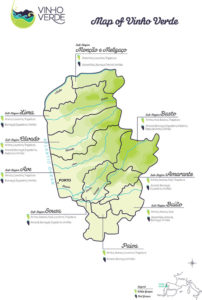
Situated in Portugal’s northwest corner, abutting Spain, the Vinho Verde region is one of the oldest in the country. This wine growing area was demarcated in 1908 and is dominated by a maritime climate thanks to its proximity to the Atlantic Ocean. While many people are more familiar with Vinho Verde as a whole, the recent lunch provided a more in-depth look at one of Vinho Verde’s subregions: Monção e Melgaço.
Of the nine subregions, Monção e Melgaço has garnered one of the top reputations for its wine and features a unique microclimate due to its location at the northernmost point of the Vinho Verde region. Here, because the mountain chain cuts off access to the ocean, there is less marine influence, resulting in hotter and drier summers than in the other subregions. Monção e Melgaço also boasts granitic soils that further influence the wines.
Although several grape varieties are grown in Monção e Melgaço, it is most prized for its Alvarinho (grown and known in Spain as Albarino). The variety was thought to have been introduced to Vinho Verde by the Cluny monks in the 12th century and has become one of Portugal’s highly respected white grapes.
There were three producers represented at the lunch: the family-owned winery, Soalheiro; Provam, which was established in 1992 by 10 winegrowers; and Adega Cooperativa e Regional de Moncao, which is 60 years old. As we tasted through a selection of their wines, we had the opportunity to explore their quality and caliber.
Overall, they possess more structure and complexity compared with more generic Vinho Verde wines. And, in fact, the consortium and producers confirmed that the trend has been to craft wines with more body, structure and complexity. To this end, some of the producers are utilizing barrel fermentation, oak aging and/or batonnage (lees stirring) in pursuit of adding depth and structure.
TASTING NOTES
The Adega Cooperativa Alvarinho Deu La Deu 2018 is a fresh and fruit-forward wine with vibrant acidity and lots of citrus notes. It was a great aperitif to accompany the passed appetizers: shrimp ceviche and cucumber and lettuce cups and poached salmon and capers.
Once seated, we were served a beautiful dish of scallops and spring greens garnished with beet and pomegranate. This was paired with the Adega Cooperativa Alvarinho Deu La Deu Reserva 2015, which offered up lovely freshness, aromas of apricot and pear, with a rich and round, medium+-bodied palate, culminating in long length. In addition, the Soalheiro Alvarinho 2018 provided a classic style with tropical fruit, nice depth and concentration, with flavors of pear, spice and apricot.
The main course of grilled octopus, marinated tomatoes, pickled onions and herbs was outstanding and a terrific match for the two wines. First up was the Soalheiro Primeiras Vinhas 2018, which was one of the first wines produced by this company. They age 15% of the wine in oak for added roundness. It displayed bright acidity, with slight tropical fruit and tangerine notes, along with medium body and long length. It was rounder and more food friendly than the other Soalheiro wine.
Next, we tasted the Provam Portal do Fidalgo 25 Anos Reserva 2015, which is made from old vines and had been fermented and aged in oak. The resulting wine showed lovely oak and honey on the nose, with medium+ acidity, a fuller body, very integrated oak and slight citrus notes on the dry palate, along with long length.
Finally, a dessert of pound cake, strawberries and a yuzu-lemon jam delighted the palate, served alongside the Provam Vinha Antiga Reserva 2017, with its fresh, bright acidity, citrus, apricot and minerality, with medium body and long length. It was an unexpected, yet perfect, pairing.
Summer Sippers: 2019 Edition
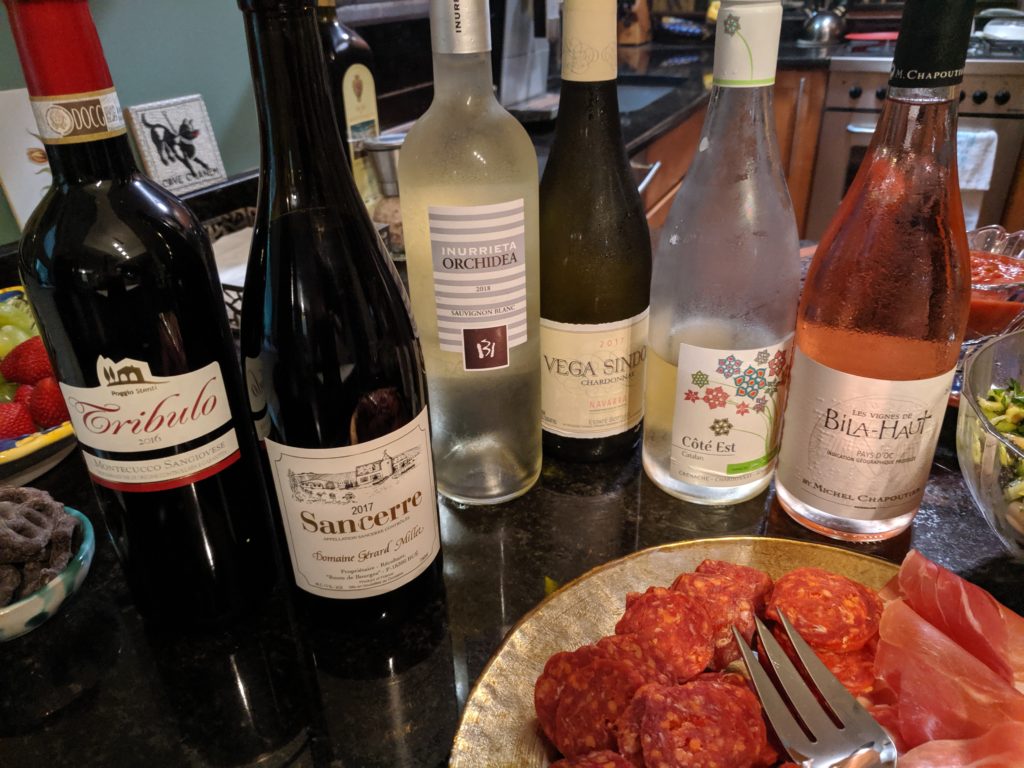
With Memorial Day weekend in the rear-view mirror and the Summer Solstice upon us, we know that it’s safe to wear white and drink rosé (although admittedly you can drink pink any time of year!).
Jokes aside, it’s the perfect time of year to turn our attention to whites and consider lighter reds, along with the requisite rosés, as we get behind the grill or head to the park for a picnic. As such, we want food-friendly, fun and festive wines that will be a welcome addition to the party. Here are just a few ideas to get you in the mood for Summer 2019!
WHITE WINES
Gonzalez Byass Tio Pepe Palomino Fino NV, Jerez, Spain, $20.00
Produced from 100% Palomino grapes, this wine is fresh, with slight yeasty and light nutty notes on both the nose and palate, culminating in long length. It is a great aperitif as well as a partner with salty, savory dishes.
Bodega Inurrieta Orchidea 2018, Navarra, Spain, $12.00
This Sauvignon Blanc offers up a pronounced nose of slight herbs, pink grapefruit, tropical fruit. It is dry with medium+ acidity, ripe citrus flavors with a hint of pith in the undercurrent, pineapple, medium+ body and long length.
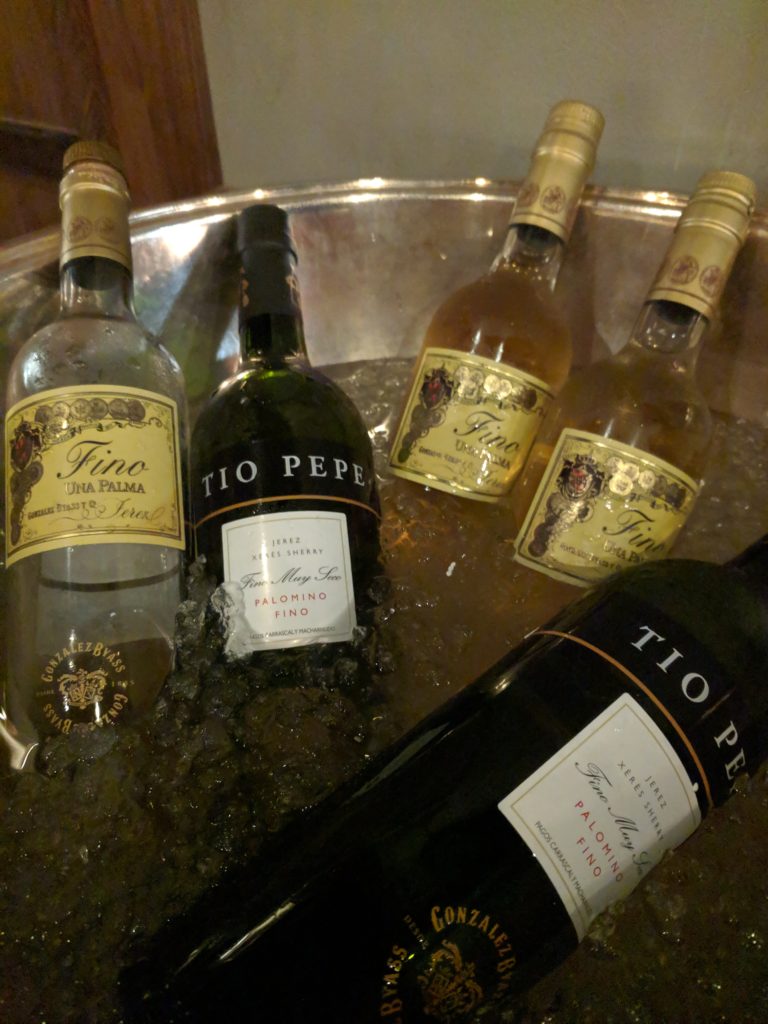
Elk Cove Vineyards Pinot Gris Estate 2017, Willamette Valley (OR), USA, $19.00
This wine is beautifully aromatic, with concentrated aromas of floral, pear, and spice, along with a dry palate with medium acidity, ripe fruit and long length.
Ponzi Aurora Chardonnay 2016, Willamette Valley (OR) USA, $65.00
Barrel fermented and aged in barrel for 20 months, this wine is slightly woody with notes of vanilla and spice. Its full-bodied palate displays freshness, good fruit and acidity, with notes of apple and melon, good texture and salinity before culminating in long length.
ROSE WINES
Muga, Flor de Muga Rosé 2017 Rioja, Spain, $24.00
Produced from 100% Garnacha, this pink-hued wine is both delicious and refreshing, with good berries fruit.
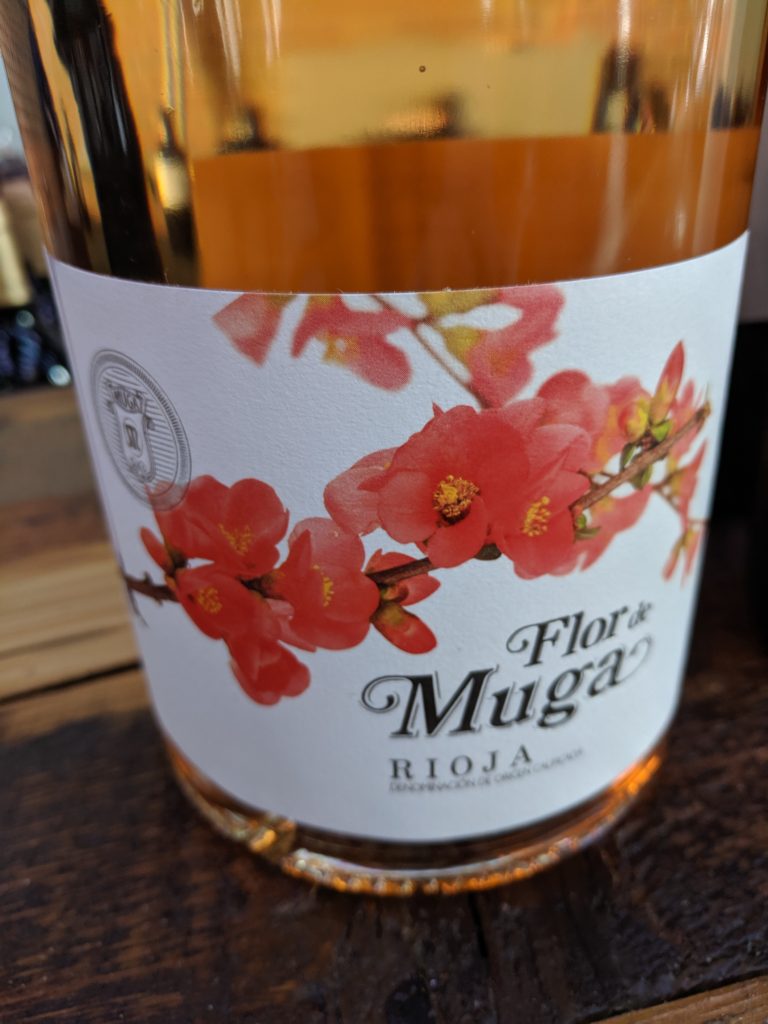
M. Chapoutier Domaine de Bila-Haut “Les Vignes” 2018, Pays d’Oc Rosé, France, $15.00
This estate was purchased by Michel Chapoutier in 1999 and, while this wine previously featured a small percentage of Syrah, this is the first vintage in which it has been phased out completely. It is now a blend of 60% Grenache and 40% Cinsualt, displaying notes of strawberry, cotton candy, slight herbs and watermelon on the nose and dry palate, coupled with bright acidity and long length.
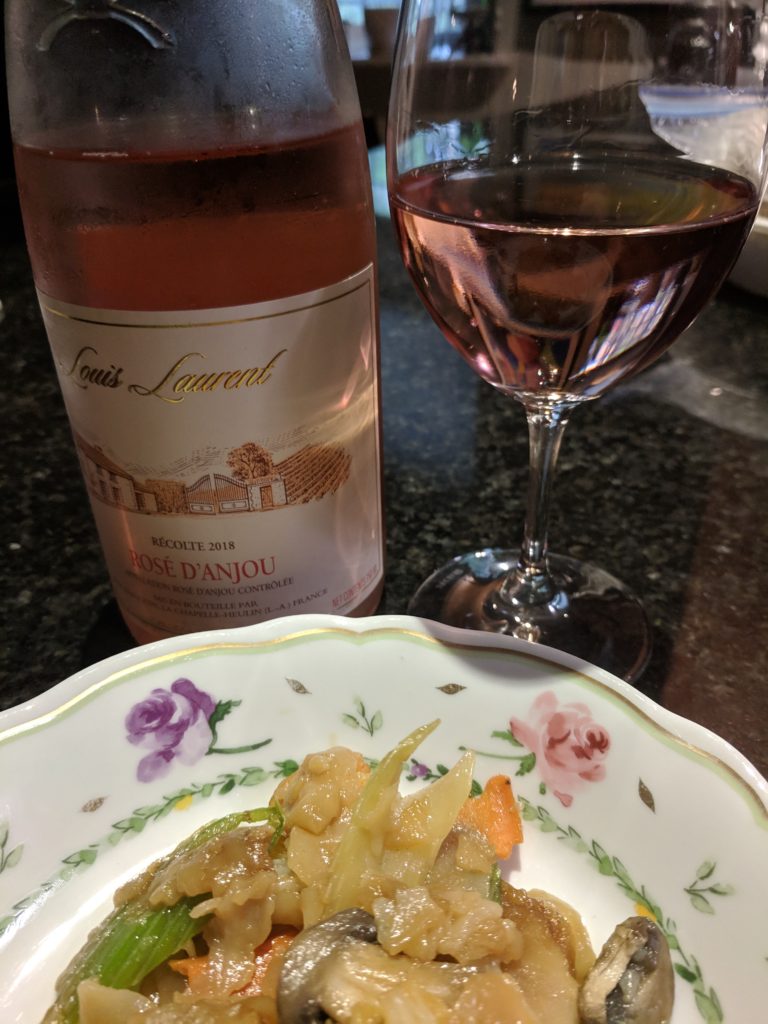
Louis Laurent Rosé d’Anjou 2018, Loire Valley, France, $13.00
Pale salmon in color, this wine is slightly off-dry, with aromas and flavors of floral, ripe berries, honey and cotton candy, with medium body and long length. The hint of sweetness is a good counterpoint to spicy foods.
Sokol Blosser Estate Rosé of Pinot Noir 2018, Dundee Hills (OR), USA, $25.00
This wine has been made since Sokol Blosser’s early days, but has gone through numerous name changes including Bouquet of Rose and Vin Gris of Pinot Noir. Aromas of peach, spice and strawberry greet the nose and are joined by spice and pepper on the dry, fresh, palate, along with good structure.
RED WINES
Domaine Gerard Millet Sancerre Rouge 2017, Loire Valley, France, $26.00
This wine offers up notes of smoke, herbs and dark cherry on the nose, with a dry palate, flavors of cherry and herbaceousness, bright acidity, medium body and long length.
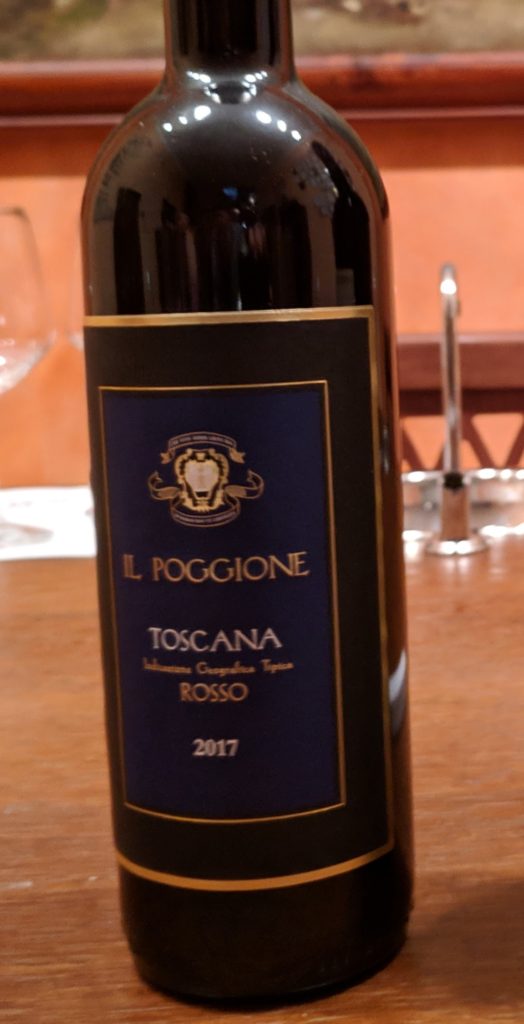
Il Poggione Rosso di Toscana 2017, Tuscany, Italy, $19.00
This blend of Sangiovese, Cabernet Sauvignon and Merlot displays aromas of dark red fruit, a hint of herbs and coffee, while the dry, medium+-bodied palate shows firm, ripe textural tannins, with bright acidity, fresh red, explosive fruit and long length. The wine can take a chill, making it a great option for a summer red!
Basile Cartacanta 2015 Montecucco Sangiovese, Tuscany, Italy, $23.00
Bringing together 80% Sangiovese with 10% Merlot and 10% Ciligiolo, this wine was aged for 12 months in French oak, then spent 18 months in bottle. With a lovely nose
of black cherry, slight herbs, oak and vanilla, it has a dry palate with ripe, juicy cherries, medium tannins with a grainy texture, medium+ body and long length.
Poggio Stenti Tribulo 2016, Montecucco Sangiovese, Tuscany, Italy, $24.00
Produced from 100% Sangiovese, this wine was aged for 18 months in French oak. It has an expressive nose of dried cherries, dried herbs and oak, with a dry palate, medium+ acidity, medium+ tannins, medium+ body, flavors of tart cherry and herbs and very long length.
Tio Pepe proves that its Sherry is up to the challenge
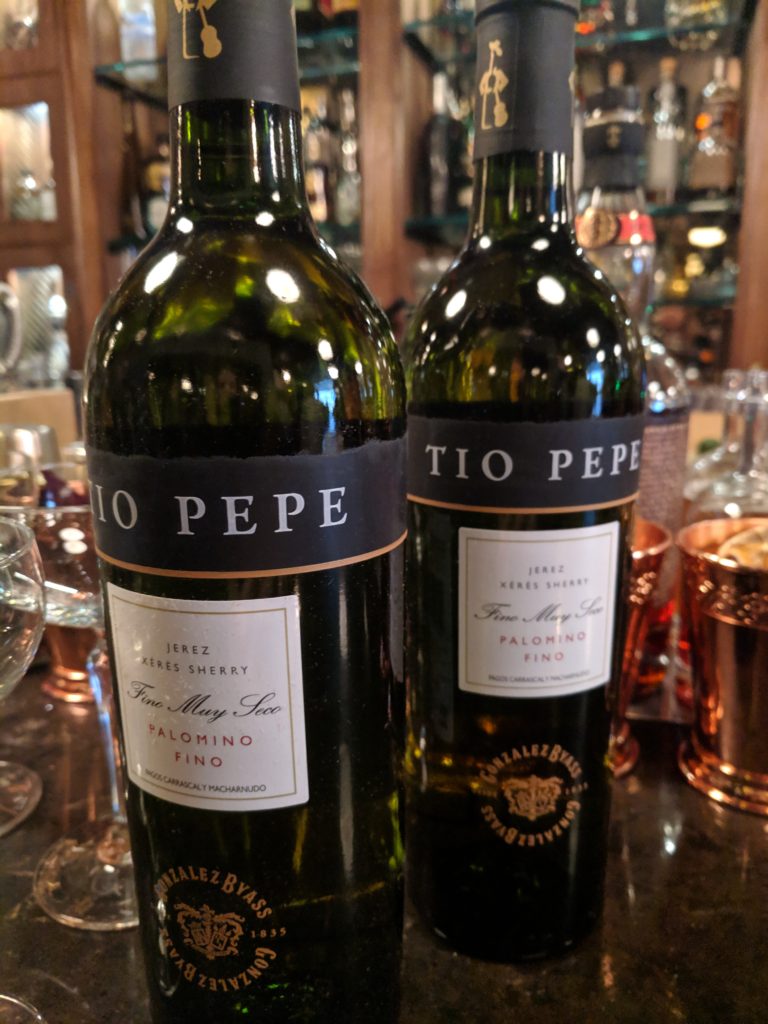
I have previously extolled the virtues of Sherry, but it bears repeating: Sherry is super food-friendly, delicious and produced in a wide range of styles suitable for nearly anytime and any occasion. Sherry is also super versatile, as was demonstrated earlier this month at the Tio Pepe Challenge.
The 2019 edition of the Challenge marked the sixth year of this international competition, which brings bartenders and mixologists head to head with the goal of crafting the perfect Sherry cocktail. Held in mid-April, the six national finalists converged in New York city at Osamil to compete.
Each person was required to complete a blind tasting, demonstrate their Sherry pouring technique wielding a venencia and last but not least, participate in a cocktail showdown. The competing cocktails featured different Tio Pepe products and ranged from sweet to super savory (toasted sesame seeds, anyone?).
Judged by Master Blender Antonio Flores, International Brand Ambassador Álvaro Plata, and Courtney Schiessl of The Tasting Panel, the U.S. Final saw Javier Ortega Diaz of Vegas’ The Libertine Social beat out Joshua Fossitt, Carlie Steiner, Tiana Dillard, Alexander Lazzari, and Patrick McDonald. As the winner, Diaz will travel to participate in the International Final on May 15 in Jerez, Spain.
Guests at the event could taste the cocktails and also had the opportunity to taste other Tio Pepe sherries, while enjoying a selection of oysters, tapas and other light bites. Overall, the Challenge proved that Sherry can hold its own in the bar setting as well as it does at the tapas bar or table.
Here is the recipe to the winning cocktail:
Sophia by Javier Ortega Diaz, The Libertine Social, Las Vegas. WINNER
2 oz. Tio Pepe Fino Sherry
¾ oz. blood orange liqueur
½ oz. freshly squeezed Lime Juice
½ oz. homemade kumquat, rosemary, thyme syrup
1 oz. homemade sparkling hibiscus water
Garnish with slice kumquats, rosemary, thyme, and edible flowers.
A Devil of a Merlot for International Merlot Day
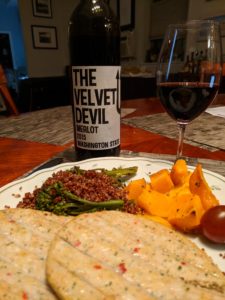 As Madeline Puckette of Wine Folly notes, national and international wine holidays are actually quite unofficial, but they are certainly a great excuse to drink wine and focus on a specific grape variety or wine category.
As Madeline Puckette of Wine Folly notes, national and international wine holidays are actually quite unofficial, but they are certainly a great excuse to drink wine and focus on a specific grape variety or wine category.
Consequently, International Merlot Day, which Puckette traces back to 2011, has a designated date of November 7 and is as good a reason as any to drink more Merlot, particularly if this grape isn’t in your usual repertoire!
No longer widely maligned, Merlot has found renewed favor, which it richly deserves and is among the most popular red varieties in the U.S. This great grape originally hails from France and is wonderful on its own or as part of a blend (especially the wines from Bordeaux’s Right Bank). Generally, these wines offer up red fruits, coffee and herbal notes, along with good acidity and soft tannins, but the wines will vary depending upon where the grapes are grown.
Merlot adapts well to many climates and has been transported from its ancestral home to almost every wine region across the globe. Within the U.S., the variety does well on Long Island and in Washington State and in California. Worldwide, there are an estimated 660,000 acres of Merlot planted, so there is definitely no shortage of Merlots to try.
To help you get started, here’s one option worth checking out:
Charles Smith The Velvet Devil Merlot 2015, Washington State, U.S., $12.99 (SRP)
With an intense nose showing plum, coffee and meatiness, this wine is dry with very ripe fruit character, medium+ body, medium acidity and present tannins. Flavors of plum, fresh herbs and dried herbs dominate the palate, along with a hint of earth and spice. These latter notes add to the wine’s complexity and give it a fall-weather feel, which may be why it paired so well with roasted butternut squash.
If you still have friends in the anti-Merlot camp, it might be time to find some new friends or you could simply tell them, the devil made me do it.
Noma: My Perfect Storm, a film about food, focus and fame
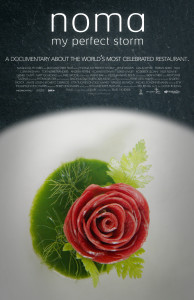 René Redzepi is not a household name, but for those in the culinary know, he is the bright star behind Copenhagen’s Noma restaurant. A new documentary from Magnolia Pictures, Noma: My Perfect Storm, inspired by Redzepi’s own books on the subject, charts his rise, fall and rise again.
René Redzepi is not a household name, but for those in the culinary know, he is the bright star behind Copenhagen’s Noma restaurant. A new documentary from Magnolia Pictures, Noma: My Perfect Storm, inspired by Redzepi’s own books on the subject, charts his rise, fall and rise again.
Scoring a reservation at Noma is a feat. Most of us won’t have the opportunity to dine at San Pellegrino’s Best Restaurant in the World (2010, 2011, 2012, 2014), but through this film, we can catch a glimpse of what it might be like to taste through the multi-course meal as imagined and conceived by this food fanatic.
In this regard, Redzepi is credited with creating a new concept — the Nordic kitchen – using Nordic ingredients almost exclusively, an especially daunting task considering that Scandinavia is blanketed by snow five months a year.
As part of developing this concept, he was determined to tell a story with each dish: the story of a place (where the food came from) and time (the season in which it was grown). In essence, the here and now of what is on the plate. With the use of time lapse photography, we are drawn through the seasons of the beautiful Danish landscape, further illustrating Redzepi’s pursuit.
To accomplish his ground-breaking approach (sometime quite literally), Redzepi combed the land for foragers, farmers and fishermen in search of local products, produce and people, many of whom we meet in the film. He claims that ingredients are an alphabet by which to share a new language; the more ingredients one has, the more beautiful the prose.
Beyond taste, Redzepi also explores new techniques such as his experiments with fermentation; fights about thyme vs lemon thyme; and inclusion of live ants in a particular dish. Aided by a head-mounted camera, we watch Redzepi’s creations come to life, accomplished with such tools as paint brush and tweezers to ensure that his vision is realized in its precise level of detail.
But, more than just a pretty picture of food, the film is refreshingly candid, permitting us to see not only the less than glamorous side of five-star dining, but also the darker side of Redzepi. Achieving such a lofty goal at a young age, Redzepi discusses the dangerous side of success. Moreover, it is evident that he takes things very personally and you can feel his frustration as he pushes himself and his team to be even more creative and constantly driven to be the best.
It is also an immigrant story. Born and raised in Macedonia on the family farm, Redzepi comes to Denmark as an outsider, who must overcome racism. Yet, as he advances his new Nordic menu, he is “more Danish than the Danes” as one of the film’s interviewees describes him. He must also overcome the derision of his peers who are less than enthusiastic about his novel menus and taunt him accordingly.
The film is a bit slow at times, but, ultimately, the story pulls you through, as you eagerly await the outcome of the various obstacles that Redzepi faces in his struggle to succeed.
Film from Magnolia Pictures
http://www.magpictures.com/noma/
Available in theaters, on demand, Amazon video and iTunes December 18, 2015.
It’s A Winederful Life
If you have been a reader of this blog, you will have noticed the lack of posts for almost a year. I have no real excuse other than the fact that I had shifted my attention and writing efforts to my NY Wine Shopping Examiner column on Examiner.com.
However, I feel that I have a voice that is not getting heard with that column. Accordingly, I am excited to announce the launch of my new website: It’s A Winederful Life. My Grape Matter posts will remain as is, but all new material will be posted to the new site. I hope you will follow me in my new online journey.
In memorium for Christian Albin
 I was stunned by the news of Christian Albin’s death earlier this week. Mr. Albin, Executive Chef at the beloved Four Seasons Restaurant, passed away on Saturday, June 13 due to cancer, only two days after the Four Seasons’ 50th Birthday Bash.
I was stunned by the news of Christian Albin’s death earlier this week. Mr. Albin, Executive Chef at the beloved Four Seasons Restaurant, passed away on Saturday, June 13 due to cancer, only two days after the Four Seasons’ 50th Birthday Bash.
Albin joined the Four Seasons in 1973 and assumed the position of Executive Chef in 1990. Accordingly, he has been the chef throughout my entire history with the restaurant, including our attendance at last Thursday’s event.
I only met him briefly once, but his cuisine has had a lasting impression upon me for years. As I recounted in my review of the restaurant’s 50th Anniversary Gala, I quickly became enamored with Christian’s food. Over a decade later, I can still recall the lusciousness of foie gras served with roasted peaches, at that first lunch.
Over the years, I have had the pleasure of dining at the Four Seasons for both formal wine dinners and casual cocktail parties, all of which delivered fabulous food, time and again. Whether it was caviar-topped smoked salmon or braised short ribs, I loved it all. So much so that I trusted him with my palate implicitly. The very first time I ate unagi (eel) and sushi, it was at the Four Seasons, having been afraid to try them previously.
On another occasion, my husband and I chose to order the Chef’s Tasting Menu at dinner, which is simply listed as such on the menu. The server checked for any allergies, but, we would not know what to expect until each course arrived at the table. I don’t recall the full menu, but I do remember that one course included sweet breads, which is something I would never have ordered or thought to try. However, I reasoned that if Christian had deemed the ingredient to be tasty, the least I could do was taste it; they were heavenly.
These memories will remain embedded in my mind as some of my most pleasant experiences and I am thankful to Chef Albin to have them. We will certainly return to the Four Seasons restaurant, but he will truly be missed. Our sincerest condolences to his family and colleagues.
A critic or a critique
 As a wine educator, I truly love to teach and am passionate about wine – its complexity, nuances and the connection to the earth it provides. Consequently, I use my blog primarily to inform and educate about wine, as an adjunct to my teaching. While I don’t think that someone needs to know everything there is about wine to enjoy it, I do think that knowledge, even in small doses, enhances one’s enjoyment of this unique beverage.
As a wine educator, I truly love to teach and am passionate about wine – its complexity, nuances and the connection to the earth it provides. Consequently, I use my blog primarily to inform and educate about wine, as an adjunct to my teaching. While I don’t think that someone needs to know everything there is about wine to enjoy it, I do think that knowledge, even in small doses, enhances one’s enjoyment of this unique beverage.
In adding to one’s knowledge, I feel that it is useful for a wine educator to talk about specific wines in the context of wine education. However, I feel that as an educator and journalist, my review of a specific wine should be impartial. To that end, my descriptions of wines are intended to be non-judgmental and simply provide the reader or student with the opportunity to learn more about the qualities of a given wine and then make his or her decision about whether or not they might wish to taste it themselves. We all have different preferences, which are equally valid, so a clear and accurate description of the wine should be beneficial to the consumer, rather than trying to dictate whether a person should like a given wine just because of the writer’s preference.
Moreover, preferences are just that — preferences. They are not necessarily an indication of quality or a lack thereof. Further, if my preference for a given wine isn’t the same as the producer’s, I am free to find another wine to drink. Therefore, I don’t think that it is my place to tell a winemaker how to make his or her wine. Given that I am a wine professional, I do think that I have a responsibility to point out poor winemaking – not my preferences for a particular wine style, but rather those elements that can be empirically determined such as unbalanced alcohol (as opposed to criticizing a winemaker for a wine with high alcohol) or an otherwise flawed wine. But, beyond that, I don’t feel that it is my place to arbitrarily prescribe winemaking techniques.
Today, there is a proliferation of wine regions and wineries, providing consumers with the luxury to find wines that span a wide range of styles and price ranges. Within a given wine region, there will be many styles. For example, in a recent Decanter article on Brunello di Montalcino, one producer noted that there was room for both a traditional and a modern style of Brunello. Even within the same winery, with the same winemaker, there will be differences among the wines that appeal to one and not another. As a case in point, at a recent visit to Jaffurs winery in Santa Barbara, I had the opportunity to taste through a number of its wines. Among the selection were two single-vineyard Syrahs – Bien Nacido Vineyard and Thompson Vineyard, both from the 2006 vintage. The Thompson Vineyard Syrah was fruit-forward in style with notes of blackberry, chocolate/cocoa, berry and spice. Conversely, the Bien Nacido offering was much less fruit-driven and presented with decidedly secondary aromas and flavors of earth, leather, berry and a hint of spice. Each retailed for $38.00.
For some consumers, the Thompson Vineyard wine will be more to their liking while the Bien Nacido may be preferable to others; different people may like both wines and still others may not like Syrah at all or may only drink Syrahs from France. Did I have a preference? Yes, but does it really matter? Were I to voice an opinion, I would become a critic, but, as an educator, I wish only to offer a useful critique. In this regard, I feel that it is my responsibility to accurately communicate what is in the glass and leave the decision-making up to the consumer. My preference for one or the other isn’t valuable to my students or to the winemaker. Of more value, I can use the two wine descriptions to talk about the influence of the specific terroir (each of the named vineyards) and, more generally, the differences in climate, which may account for the flavor differences in the two wines.
With this in mind, one of the interesting things about wine is that it is both a natural product and a man-made one. From budbreak to harvest, it is essentially up to Mother Nature to determine the outcome of a given harvest. Yet, humans have the ability to manipulate the vineyard such as through amendments to the soil, irrigation in the absence of rain, and both natural and chemical means to control mildew. Then, more directly, once the grapes have been harvested, it is up to the winemaker and his/her team to decide what winemaking techniques to consider. Should they employ stainless steel or oak? How long should the maceration last? In Europe, many of these decisions are more regulated than in the New World (i.e. the Americas, New Zealand, Australia and South Africa), but they do exist to some extent.
Accordingly, as an artisan product, the winemaker must be a grape whisperer – listening to what the grapes are telling him or her to do. Some winemakers are more hands-off than hands-on, but may need to intercede in more difficult years. With experience, knowledge and preferences guiding the winemaker, he or she endeavors to make the best wine they can. Once the wine has been made, it is the reviewer’s job to accurately describe the wine and leave winemaking decisions up to the winemaker. It is easy to be an armchair quarterback, but as I wasn’t in the vineyard or the winery encountering various conditions and challenges, it is not my place to tell the winemaker how s/he should make their wine. And, of course, I certainly wouldn’t want a winemaker telling me how to write.

